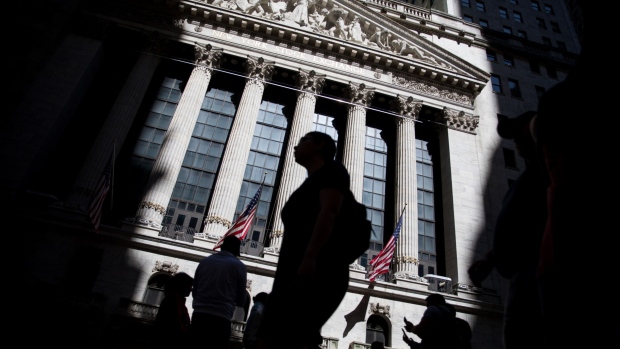U.S. stocks continued to swing wildly after a five-month rally came to a halt last week, with the S&P 500 turning higher in the final hour of trading.
The tech-heavy index traveled 3 per cent from high to low Friday and was headed for the fifth loss in six days. It’s down 10 per cent from its Sept. 2 record. The rout comes after a torrid August capped a 58 per cent rally from late March. Apple Inc. has plunged 16 per cent from its 10-day old high, but remains only at the lowest in a month.
“You see this kind of volatility when there is a vacuum of information for investors, and we don’t have good data,” said Erika Karp, founder and CEO of Cornerstone Capital Group. “Markets can adapt when there is certainty, but when there is extreme uncertainty and when we’re in a period of transition, you’re going to get volatility.”
The S&P 500 edged higher, with three stocks rising for every one that declined. The Dow Jones Industrial Average advanced on rallies in Nike, Dow and Caterpillar.
Tech, the scene of fervent bullish options activity, gave up early gains for a second day, as investors assessed whether the pullback had run its coursee. Selling picked up Friday after Bloomberg reported SoftBank Group Corp. is considering revamping a controversial strategy of using derivatives to invest in tech companies. Microsoft took a hit after a report that China doesn’t favor a forced sale of TikTok’s U.S. operations.
Treasuries advanced, sending the 10-year yield toward 0.67 per cent, while the dollar remained slightly lower. The yen was flat, oil was little changed and gold slumped.
Global stocks remain on track for the first back-to-back weekly declines since March after a rally that added US$7 trillion to U.S. equity values. The pandemic is continuing to upend the global economy, with U.S. data showing cracks in recent labor-market strength and virus cases continuing to climb globally.
“When you see these short-term, sudden moves after a run-up like we’ve had, it doesn’t mean you avoid the sector, but you have to be prepared that it’s the price of admission of being there,” said Charles Day, a managing director and private wealth advisor at UBS Global Wealth Management. “Investors should stay invested, we’re still positive on equities.”
In Europe, traders are closely watching comments from European Central Bank officials after President Christine Lagarde spurred a rally in the euro on Thursday when she delivered relatively mild comments on the currency’s surge. Chief Economist Philip Lane set a tougher tone on Friday, signaling more monetary stimulus may be needed. Meanwhile, the British pound headed for its biggest weekly drop since March as Brexit talks frayed.
In other markets, crude oil hovered around US$37 a barrel in New York and gold dipped. The MSCI Emerging Markets Index rose, ending a seven-day losing streak.
These are the main moves in markets:
Stocks
- The S&P 500 rose 0.3 per cent as of 3:37 p.m. in New York.
- The Nasdaq Composite Index lost 0.5 per cent.
- The Nasdaq 100 Index dropped 0.5 per cent.
Currencies
- The Bloomberg Dollar Spot Index fell 0.1 per cent.
- The Japanese yen was little changed at 106.12 per dollar.
- The euro increased 0.1 per cent to US$1.1829.
Bonds
- The yield on two-year Treasuries decreased one basis point to 0.13 per cent, the lowest in a week.
- The yield on 10-year Treasuries dipped one basis point to 0.67 per cent, the lowest in a week.
- The yield on 30-year Treasuries fell less than one basis point to 1.42 per cent, the lowest in a week.
Commodities
- West Texas Intermediate crude was flat at US$37.30 a barrel.
- Gold futures lost 0.8 per cent to US$1,949 an ounce.
Source:- BNN
Source link
